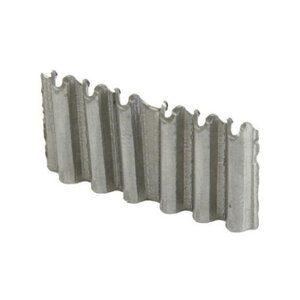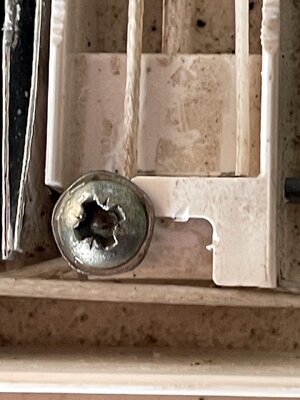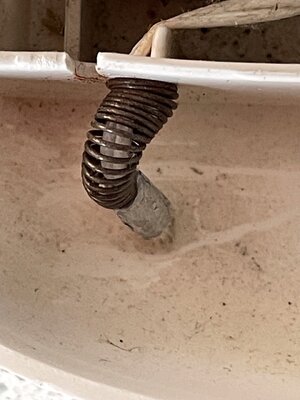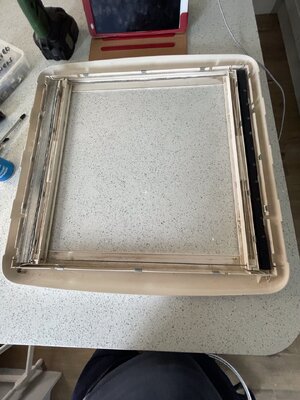I think I've posted a similar thread before about the worry about whats going to break on the next trip out. Mostly driven by the poor design and poor assembly techniques and lack of QA.
Came back from our last trip three days ago. On the outbound journey at a coffee stop and quick check of van I noticed that one of the kitchen draws had come out fully. On inspection the cross rail that should hold the catch in had come adrift. I managed to get it wedged back in but it still came out again later.
So this weekend I take the draws out to do a proper fix. The cross rails that hold the mating half of the catch, are made of the light weight wood that only caravan makers can seem to get hold of. Look too quickly at it and it will break. The cross rails are fitted to the cabinet carcass using only a couple of corrugated fasteners - one each side. Like that shown below. The corrugated fasteners had sheared of on one side and were just hanging in on the other. Obvious solution was to put proper angle brackets on them - job done.
I'd also noticed that when the draws were opened and closed there was a knocking noise. Not too much of a problem but annoying. Now was the time to look at why.
The drawer sliders that are fixed inside the cabinet are screwed to the sides. The front screw was a pan head screw. The other part of the runner that attaches to the actual drawer is secured with a screw that's too long. So as you push the draw in our pull it out this screw hits the other one. Solution - use a countersunk screw on the cabinet rail. How difficult was that?
What's next I wonder!

Came back from our last trip three days ago. On the outbound journey at a coffee stop and quick check of van I noticed that one of the kitchen draws had come out fully. On inspection the cross rail that should hold the catch in had come adrift. I managed to get it wedged back in but it still came out again later.
So this weekend I take the draws out to do a proper fix. The cross rails that hold the mating half of the catch, are made of the light weight wood that only caravan makers can seem to get hold of. Look too quickly at it and it will break. The cross rails are fitted to the cabinet carcass using only a couple of corrugated fasteners - one each side. Like that shown below. The corrugated fasteners had sheared of on one side and were just hanging in on the other. Obvious solution was to put proper angle brackets on them - job done.
I'd also noticed that when the draws were opened and closed there was a knocking noise. Not too much of a problem but annoying. Now was the time to look at why.
The drawer sliders that are fixed inside the cabinet are screwed to the sides. The front screw was a pan head screw. The other part of the runner that attaches to the actual drawer is secured with a screw that's too long. So as you push the draw in our pull it out this screw hits the other one. Solution - use a countersunk screw on the cabinet rail. How difficult was that?
What's next I wonder!







